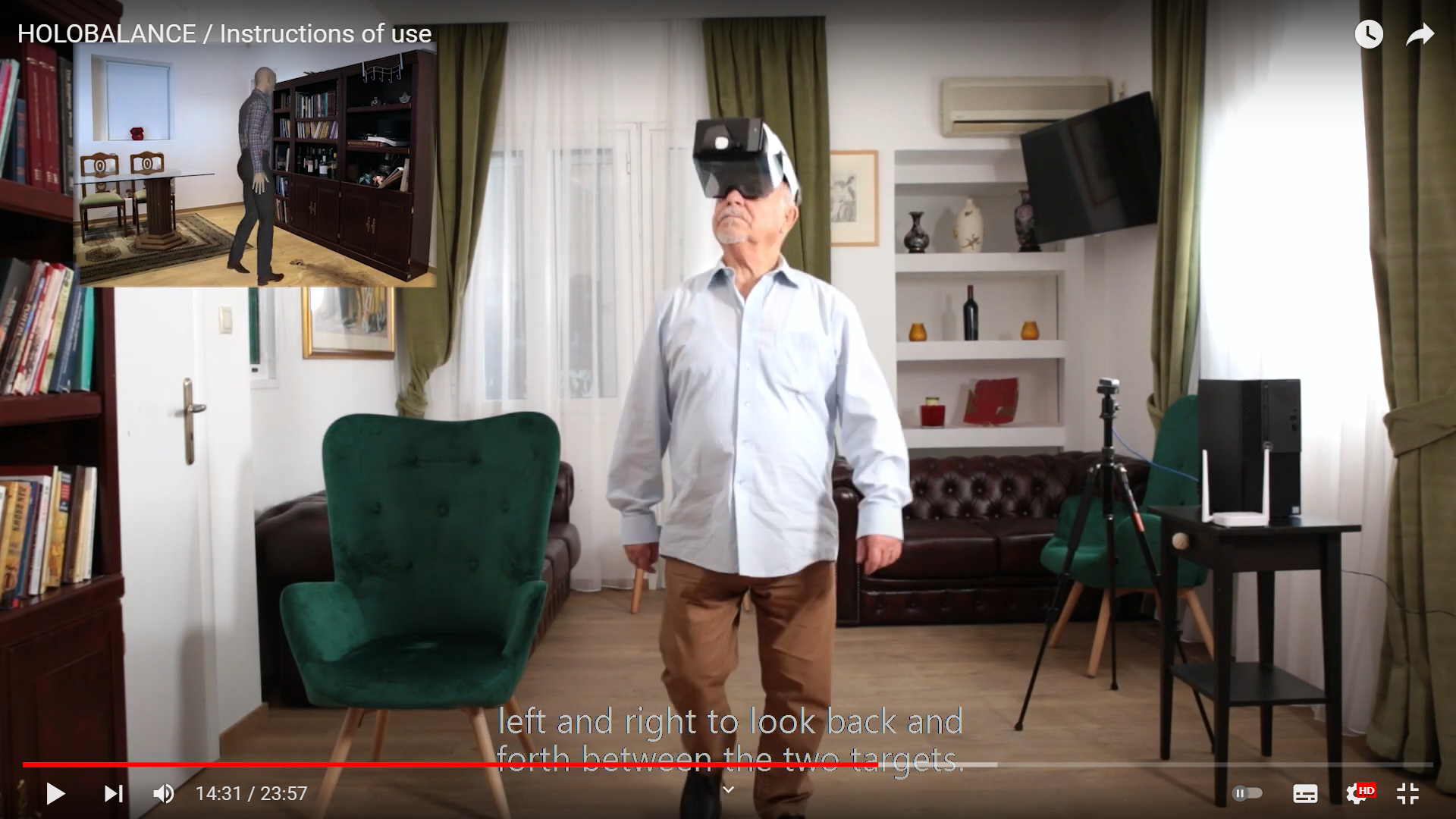Holobalance latest update

Published on 23 November 2021 01:00 PM
Feasibility and effectiveness of the HOLOBALANCE telerehabilitation platform
Around 1 in 3 adults over 65 and half of everyone over 80 will have at least one fall a year. Falls and balance disorders in older adults have wide ranging detrimental impacts on a person’s physical, psychological and overall quality of life. Early detailed individualized assessment and treatments are recommended by several guidelines but it’s often not implemented into clinical practice due to lack of resources and specialist knowledge.
Holobalance has been an EU funded programme that ran from December 2017 to September 2021, working with thirteen partners across seven countries. The overall objective of Holobalance has been to develop and validate a personalised programme for older people at risk of falling and explore an advanced and more holistic approach to standard care.
The HOLOBALANCE platform provides an advanced tele-rehabilitation solution addressing critical health needs and providing an individualised, prescribed program to be performed at home. HOLOBALANCE features evidence-based exercises, cognitive and other gamified training and physical activity planning. The program was designed by a specialist balance physiotherapist and is intended to be prescribed and regularly reviewed by a non-expert clinician. The system remotely monitors a person’s exercises in the home and provides outcomes to the treating physiotherapist to review. The system comprises of a set of easy to use sensors and a head worn augmented reality display, providing detailed data for the remote assessment. The proof-of-concept study, conducted from May 2019 to September 2021, with about 80 patients using HOLOBALANCE and 80 patients as controls and participants were randomised into two intervention groups. One group received the HOLOBALANCE/HOLOBOX intervention, i.e. home-based or the clinic-based intervention, and the other received the standard clinical treatment i.e., a sheet of exercises from the OTAGO Home Exercise Program for 8 weeks.
There were huge challenges due to the global pandemic and uncertainty due to various restrictions across the study sites of Athens, Freiburg, and London and we anticipate that these measures of feasibility would be better under less adverse circumstances. The absence of any adverse events during the study related to participant interventions or associated with functioning of the HOLOBALANCE system suggest that the program is safe to use in future studies and clinical applications.
The high rate of exercise compliance (83%) across all study sites, and improved balance perceived by 73% of the older adults, and those with vestibular disorders adds further support for the feasibility of the HOLOBALANCE programme. Furthermore, both the HOLOBOX and Home-based delivery of the systems appear to be feasible interventions, regardless of the participants age, sex, or level of education.
Regarding effectiveness, 88% of all participants in the HOLOBALANCE interventions vs. 55% for participants in the control group improved their postural stability. 82% of all participants in the HOLOBALANCE interventions vs. 52% for participants in the control group improved their balance.
A high dosage (more than 50 hours) of challenging balance exercises has been associated with a successful reduction in fall rates in older adults. Our findings indicate that a moderate dosage multisensory and multifactorial balance rehabilitation program may also have a significant effect on falls risk and intervention cost. The potential benefit for these multiple factors is therefore immense and must be confirmed in a full randomised controlled trial.
An additional beneficial finding was noted for social well-being. Participants in the HOLOBALANCE interventions combined, 87.5% achieved at least a 25% improvement in social wellbeing. A decrease of 14.66 days per month during which the participants’ balance impacted their lives in a negative way was demonstrated.
Further exciting findings were observed for cognitive function scores with significant pre-post improvements (8%) noted for visual memory and new learning and visual pattern recognition memory. It is well documented that falls risk is greater for those with cognitive impairment whereby all aspects of balance control deteriorate with increasing severity of cognitive impairment. This finding has significant implications for further studies in this area and for clinical practice. Positive improvements in cognition, as those observed, may also contribute to the delay of onset for cognitive impairment and consequently prolong the active life of older adults, with better quality of life, improved social wellbeing and reduced economic costs for their care.
If you would like more information about the project visit https://holobalance.eu/
HOLOBALANCE has received funding from the European Union’s Horizon 2020 research and innovation programme under grant agreement No 769574
